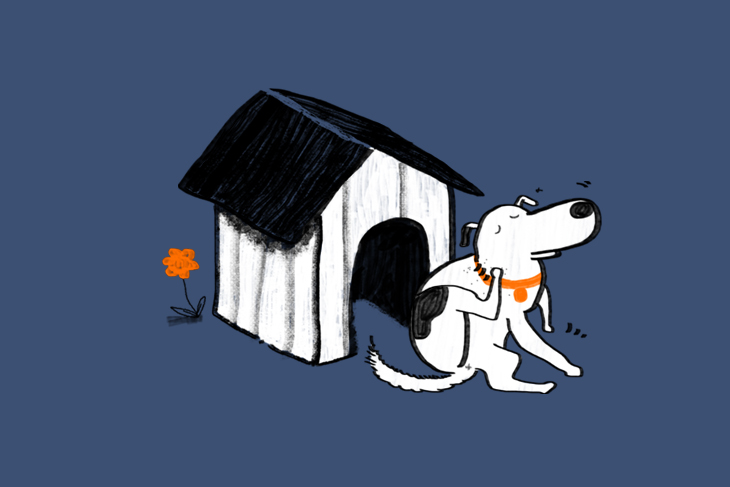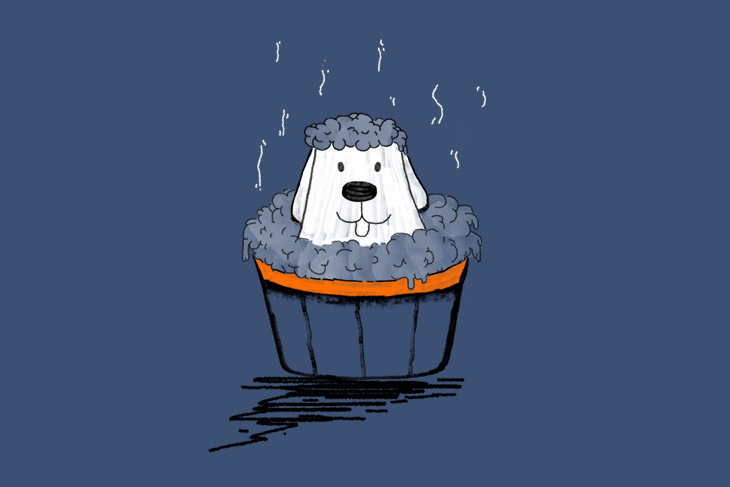September 5, 2019

Washing your dog regularly is necessary
In the past, we used to only wash our dog once a year when the smell is unbearable, and we do it using a hose in the backyard. These days, with many more people living in apartments and dogs being inside with their owners more often than not, bathing is becoming a more frequent (and necessary) event.

Pet shampoos are getting better and better!
Shampoos, meanwhile, have evolved to the point where they not only remove the smell but can also be used to help treat a number of skin conditions. The common availability of hydro-baths and dog groomers makes bath time a lot simpler for everyone!

What can you wash your dog with?
The first rule of dog bathing is not to use human shampoo. The pH of dog skin is very different from that of human skin. While our skin has a pH of around 5.5 to 5.6, your dog's skin is much more neutral, averaging a pH of between 6.2 and 7.4.1 Shampoos formulated for humans are much more acidic than those for dogs, and using a human shampoo can upset the balance of a dog's skin.
The particular shampoo you choose for your dog depends on the reason for the bath. There are good all-purpose cleansing shampoos, and then there are medicated or therapeutic shampoos, which treat a range of skin conditions or help control fleas, ticks or both.
There are shampoos available for treating dry skin, oily skin, scaly skin or dog dandruff, itchy skin, and infected skin. The mechanical action of washing a dog -- including applying and lathering up the shampoo and rinsing it off with water -- in itself helps remove dead skin cells, loose hair and bacteria or fungi as well as removing allergens on the skin. And a good shampoo will assist to no end in removing the smell!

How often should you wash your dog?
How often a dog is washed also depends on the reason for the bath. Generally, dogs are designed to be self-cleaning. Dead skin cells and dirt are carried along the hair shafts and flick off the ends, so many dogs will only require occasional bathing. There is no recommended frequency for bathing a healthy dog, but it should certainly not be carried out more than once a week.
However, dogs with skin problems do not self-clean as efficiently, and dirt, bacteria, and skin secretions may build up... which is where the smell begins. Inflamed skin is warmer and moister than normal skin, and excess skin secretions provide a good source of nutrition, creating perfect conditions for bacteria or fungi to proliferate. Such dogs may require bathing anywhere up to every day or every other day, depending on the product and the skin condition.
There are different types of therapeutic shampoos including:
- soap-free, pH-neutral shampoos containing substances such as oatmeal or aloe vera. These are great for normal or itchy skin, helping to cleanse the skin as well as soothe and reduce inflammation;
- shampoos containing selenium sulfide, which are designed to remove dog dandruff;
- shampoos containing antiseptics such as chlorhexidine, which can help treat bacterial skin infections such as hot spots;
- shampoos containing antifungal agents such as miconazole or ketoconazole, which can be useful in treating fungal skin infections;
- shampoos and rinses containing pyrethrins or permoxin, useful for short-term flea and tick control.

How should you apply therapeutic shampoos?
When applying a therapeutic shampoo, the water should only be tepid as inflamed skin can be made much itchier when bathed in hot water. The shampoo should only be lathered on to the skin, avoiding eyes and ears. Some people put cotton wool balls into their dog's ears to stop water from getting in. If you choose to do this, make sure you do it very gently and do not force it down into the ear canal.
Dog shampoos
- Dermcare Malaseb Medicated Shampoo
- Aloveen Oatmeal Shampoo
- Virbac Epi-Soothe Oatmeal Shampoo
- Virbac Epi-Soothe Oatmeal Cream Rinse and Conditioner
- Fido's Puppy/Kitten Shampoo
Most shampoos then need to be left on the skin for 5 to 10 minutes before being rinsed off. During this time, keep your pet occupied by patting or, if in the backyard, perhaps playing with a ball.

Rinse your dog properly
After the appropriate time ensure all the shampoo is thoroughly rinsed off, as any residue can become itchy or sticky and cause the coat to look dull when it dries. The fur will often 'squeak' between your fingers when all the shampoo residue has been removed.
If you are going to use a conditioner, let the dog have a shake to remove excess moisture or give it a quick towel dry, then apply. Conditioners help with untangling and ensuring a smooth coat, just as they do in human hair. Some are also therapeutic. Some conditioners need to be rinsed off, others can be left in the coat.

Don't forget to dry your dog
Lastly, dry the dog. Some pets will let you use a hairdryer, others may sit near a heater or outside in the sun to speed up the drying process. A good towel dry will get the excess water out to start with.
Make sure you brush the coat as it is drying, as there will be lots of loose hair to remove and this helps to bring the water to the tips of the fur where it can dry more easily.

Show your dog some love!
Praise your dog for being so cooperative during the bath, to reinforce bath time as a positive experience which your pet will want to repeat.
Reference:
